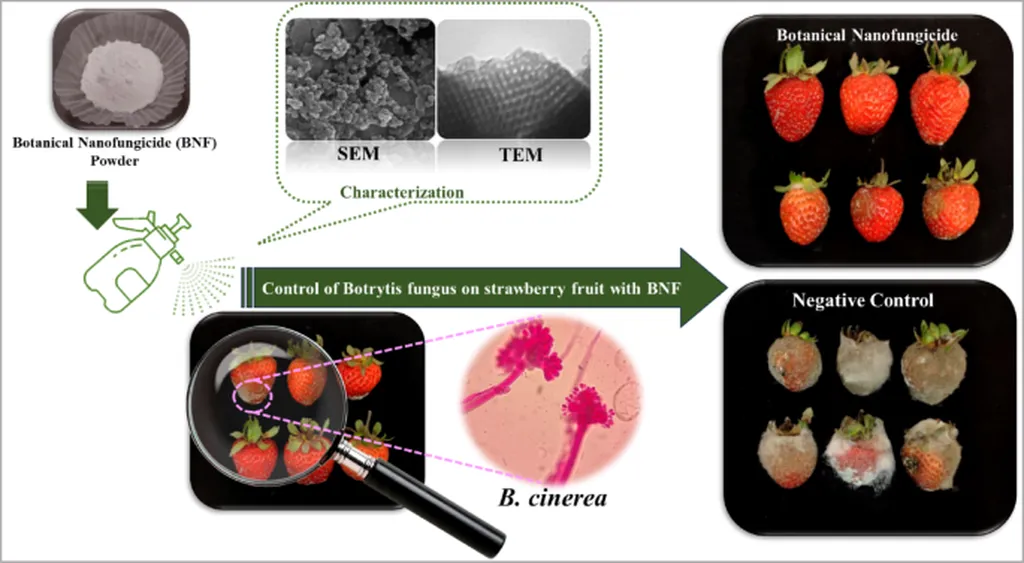In the quest to combat postharvest losses in strawberry production, a team of researchers has developed a promising, eco-friendly alternative to conventional fungicides. Published in *Scientific Reports*, the study introduces a botanical nano-formulated fungicide (BNF) that encapsulates citrus peel essential oil (CEO) within a biocompatible matrix of silica nanoporous and polyethylene glycol (PEG). This innovation could significantly impact the agriculture sector by offering a sustainable solution to a persistent problem.
Botrytis cinerea, a notorious pathogen, is responsible for substantial postharvest losses in strawberries, which are highly valued for their flavor, nutritional content, and antioxidant properties. The short shelf-life of strawberries poses a significant challenge to producers, and current chemical controls often come with environmental and health concerns. The BNF developed by lead author Farzaneh Jokarshourijeh and her team at the Agricultural Biotechnology Research Institute of Iran (ABRII) aims to address these issues head-on.
The researchers characterized the BNF using various advanced techniques, including scanning electron microscopy (SEM), transmission electron microscopy (TEM), and thermogravimetric analysis (TGA). They also employed gas chromatography-mass spectrometry (GC-MS) and Brunauer-Emmett-Teller (BET) and Barrett-Joyner-Halenda (BJH) methods to ensure the formulation’s efficacy and stability.
To evaluate the antifungal efficacy of BNF, the team compared it against Signum, a commercial fungicide, at different concentrations. The results were promising. “BNF at a concentration of 10,000 mg L⁻¹ achieved 74.03% inhibition of B. cinerea, closely comparable to Signum’s 77.52% inhibition,” Jokarshourijeh explained. This level of efficacy, coupled with the eco-friendly nature of the BNF, positions it as a strong contender in the market for postharvest disease control.
The commercial implications of this research are substantial. Strawberry producers stand to benefit from reduced postharvest losses and extended shelf-life, leading to increased profitability and market competitiveness. Moreover, the shift towards sustainable and eco-friendly solutions aligns with growing consumer demand for responsibly produced agricultural products.
The potential applications of BNF extend beyond strawberries. As Jokarshourijeh noted, “This study demonstrates that BNF is a promising eco-friendly alternative to synthetic fungicides for controlling B. cinerea, enhancing strawberry shelf life, and reducing chemical residues, with potential utilization in other crops.” This versatility could open new avenues for the agriculture sector, fostering innovation and sustainability across various crop types.
The development of BNF represents a significant step forward in the fight against postharvest diseases. By leveraging nanotechnology and biocompatible materials, researchers have created a formulation that is not only effective but also environmentally responsible. As the agriculture sector continues to evolve, such innovations will be crucial in meeting the challenges of food security, sustainability, and market demand. The research published in *Scientific Reports* by Jokarshourijeh and her team at the Agricultural Biotechnology Research Institute of Iran (ABRII) highlights the potential of nanotechnology to revolutionize agricultural practices and pave the way for a more sustainable future.

